KEEP THIS NEWSLETTER ALIVE! GOT A WEDDING OR BIRTHDAY COMING UP?
Shop Online at https://www.irishnation.com

Irish Design Ear-Rings from US$85 |

Great Gifts! Family Crest Shields |

New Designs on Coffee Mugs |

=============
IN THIS ISSUE
=============
=== News Snaps from Ireland
=== New Free Resources at the Site
=== Ancient Ireland #1: The Milesians
=== 35 Things You Never Knew About Dublin
=== The 1916 Easter Rising
=== YouTube Videos of Irish Interest
=== Gaelic Phrases of the Month
=== Monthly Free Competition Result
===========
FOREWORD
===========
The 100th anniversary of the 1916 Easter Rising is
fast approaching with the various political parties
all jockeying for position. This month we have an
article that explains the background to the Rising.
We also have a video showing actual cinema coverage
of the aftermath.
Enjoy your FREE Ireland Newsletter!
Michael
P.S. Please DO FORWARD this Newsletter to a
friend or relative. If you have a website or Facebook
page or Blog (or whatever!) then you can help
us out by putting a link on it to our website:
www.ireland-information.com
Do tell your friends about us as this helps
to keep this newsletter free!
WE NEED YOUR HELP - CONTRIBUTE!
Got something to say? Don't keep it to yourself!
Why don't you submit an article for inclusion
in the next edition? Go here for more information:
https://www.ireland-information.com/newsletter.htm
Do you have access to a website? You can help to
keep this newsletter alive by adding a link to
any of our websites below:
https://www.irishnation.com
http://www.irishsurnames.com
https://www.ireland-information.com
http://www.allfamilycrests.com
http://www.irishpenpals.com
If you have an AOL or HOTMAIL account then you
may get better results by viewing this
newsletter online here:
https://www.ireland-information.com/mar12.htm
The only way that you could have been
subscribed to this newsletter is by filling
out a subscription form at the site whereupon
a confirmation notice would have been issued.
If you wish to unsubscribe then go here:
https://www.ireland-information.com/newsletter.htm
========================
NEWS SNAPS FROM IRELAND
========================
|
FORMER TAOISEACH BERTIE AHERN RESIGNS FROM FIANNA FAIL Despite still protesting his innocence former Taoiseach Bertie Ahern has resigned form the Fianna Fail party just as he was about to be expelled. The report of the Mahon Tribunal into 'payments to politicians' forced the hand of the current Fianna Fail leader, Micheal Martin, who instigated proceedings to expel his former party leader. This is a huge fall from grace. Bertie Ahern was Taoiseach of Ireland from 1997 to 2008. It was during this time that the economy of Ireland really took off with the 'Celtic Tiger' roaring its way to hitherto unheard of heights of expansion and economic development. Unfortunately the boom was to a large extent based on the construction industry and when the housing bubble burst in 2008, coupled with the banking crisis that followed, the economy collapsed and took Bertie Ahern's reputation with it. 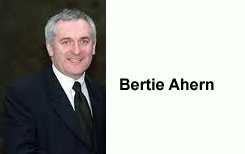
He had resigned in 2008 after revelations in the Mahon Tribunal led to questions about deposits made to his bank account for which he gave several ambiguous answers. The fact that some of this money was raised from 'whip-arounds' has exposed Bertie Ahern to an income tax liability at the very least, although the most vociferous of his critics want to see him prosecuted. It should be pointed out that the Mahon report did not find Bertie Ahern guilty of corruption (of taking a bribe for political favours) but rather indicated that it simply did not believe his account of the lodgments to his bank accounts. The former Taoiseach has indicated that he intends to challenge the findings of the Mahon Tribunal in court in an effort to clear his name. Fianna Fail are keen to move on from the affair and have acted quickly in instigating expulsion proceedings against not just Bertie Ahern but also several other high-profile former T.D.'s who may ultimately face criminal charges. This matter is likely to drag on for several years yet but is becoming less and less important in the public consciousness. The Mahon enquiry cost well in excess of 300 Million euro to complete, most of which was paid to Barristers. Critics of the enquiry lament such a dreadful waste of public money, while others take the view that this is the price of democracy. Regardless of the outcome of his fight with the Mahon Tribunal, Bertie Ahern will likely be remembered most for his role in the Northern Ireland peace process in which he was instrumental. He was one of the main players who brought a skeptical Unionist establishment in Ulster to the table with Sinn Fein while also pushing through a change in the Irish constitution necessary to ensure progress. Surely his greatest achievement. DEPTHS OF IRISH PROPERTY CRASH REVEALED The Central Statistics Office in Ireland has published some startling figures that shown just how far Irish property prices have tumbled. Overall prices are down by 49% since 2007. Dublin apartment prices have fallen by as much as 62% while falls outside Dublin are 45%. 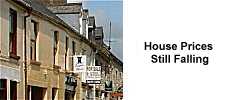
Most worrying though is that there are signs that the decline in prices is starting to accelerate again. It had been hoped that the bottom of the market had been reached towards the end of 2011 but the new CSO figures reveal that February 2012 saw a 2.2% price reduction in that month alone. Commentators continue to blame the banks reluctance to lend for the continuing fall in prices with no end in sight. DEFIANCE TO PROPERTY TAX GROWING The hugely unpopular property tax that has been introduced by the Irish government is being fought at every level of Irish society. Members of the Irish Parliament (T.D.'s), priests, journalists and pensioners have combined to publicize their campaign of non-payment of the tax. The deadline for payment is March 31st but a week before that deadline only about 20% of households had paid the 100 euro charge. It is expected that the nominal charge will be replaced with a much higher annual bill next year, stretching to thousands of euros for some families. 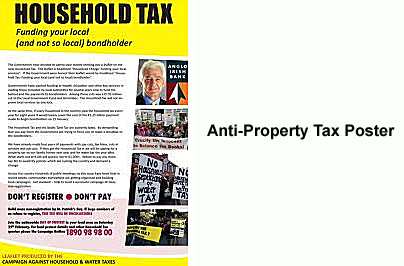
If the vast majority of households (or even a significant minority) refuse to pay the charge then the government will face a huge problem. It must either threaten, fine and even imprison huge numbers of its citizenry or else scrap the charge and go back to the drawing board. This is a potentially explosive issue for the Fine Gael government and is a first sign that a significant protest against the EU/IMF austerity measures has enough momentum to hurt Fine Gael where it matters, at the polling station. Even more at risk from any well-organised mass protest against the charge is the Labour Party who are in coalition with Fine Gael. As a left-wing party they would be under even more pressure than Fine Gael to scrap the property tax. There are other dangers in this issue for the government apart from an increase in its unpopularity. Ireland is to hold a referendum at the end of May to approve or reject the new EU fiscal Treaty. If the anti-property charge groups were to coalesce with the anti-Treaty groups then it is conceivable that the Treaty could be defeated with huge repercussions for Ireland within the European Union. |
===============================
NEW FREE RESOURCES AT THE SITE
===============================
IRISH HOLIDAY AND TOURIST FORUM
Post your question about holidaying in Ireland and
we guarantee an answer will be posted on the board:
https://www.ireland-information.com/irishholidays-irishtourist/irishtouristboard.html

NEW COATS OF ARMS ADDED TO THE GALLERY
The following 5 coats of arms images and family
history details have been added to the Gallery:

G: Gallen, Gavaghan
N: Newman
P: Pigott
W: Whitty
View the Gallery here:
http://www.irishsurnames.com/coatsofarms/gm.htm
THE PERFECT WEDDING, ANNIVERSARY OR BIRTHDAY GIFT!
We now have over 100,000 worldwide names available.
Get the Coat of Arms Print, Claddagh Ring,
Screensaver, Watch, T-Shirt Transfer or Clock for
your name at:
https://www.irishnation.com/familycrestgifts.htm
===========================
ANCIENT IRELAND #1: THE MILESIANS
===========================
|
The 'Leabhar Gabhala' or 'book of invasions' is
a manuscript that records the ancient history of
Ireland. It was written in the eleventh
century and gives a vital account of the invasion
by the Gaels, the 'Sons of Mil', the Milesians.
The story of the Milesians begins in Scythia in the very south-eastern part of Europe in the millennium before Christ. These were a nomadic people famed for their prowess with horses. They were ruled by King Fenius who had a grandson named Gaedhuil, or 'green gael'. Having been bitten by a snake the boy was taken by his father to Moses, who cured him with his staff. Moses told the boy that he would travel to a land without snakes, an island to the west, where his descendants would remain. 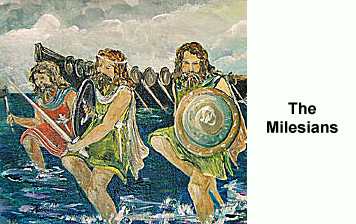 The boy travelled throughout Europe and settled in Spain where he was known as Milesius and became King. His brother, Ith, discovered the island that Moses had told him about, but was killed by the Tuatha de Danaan, the people of the Goddess Danu. By this time Milesius had also died but his wife, Scota, and his sons, swore vengeance on the Tuatha de Danaan and set off for Ireland. Victory was theirs despite Scota being a casualty of the war. The sons of Milesius, Eber and Eremon, became rulers of Ireland, the land without snakes. The two rulers divided the country between them with Eber ruling the North and Eremon the South. Needless to say, the peace of the land was short-lived with a battle ensuing to claim the hill of Tara. Eremon prevailed, and became King of Ireland. Academic scholars are unsure of when exactly the Milesian invasion occurred. Some estimate it at 1000 bc, others as early as 3500 bc. Despite the difficulty with verifying traditions and legends there is good evidence to prove the existence of the Milesians as a Celtic race of people. The descendants of the Milesians include 'Niall of the Nine Hostages' (from whom all O'Neills are descended), Conn of the Hundred Battles, and Ugani Mor. It is based on this pedigree that the Milesians are regarded as the true fathers of the Irish people. |
KEEP THIS NEWSLETTER ALIVE!
Solve your gift problem at: https://www.irishnation.com

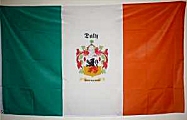
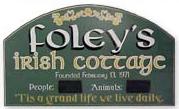
==============================
35 THINGS YOU NEVER KNEW ABOUT DUBLIN
by David Carey
==============================
|
1. Dublin's O'Connell Bridge was originally made
of rope and could only carry one man and a donkey
at a time. It was replaced with a wooden
structure in 1801. The current concrete bridge was
built in 1863 and was first called 'Carlisle
Bridge'.
2. O'Connell Bridge is the only traffic bridge in Europe which is wider than it is long and Dublin's second O'Connell Bridge is across the pond in St. Stephen's Green. 
3. Dublin Corporation planted 43,765 deciduous trees in the Greater Dublin area in 1998. 4. Dublin's oldest workhouse closed its doors for the last time in July 1969. Based in Smithfield, the premises housed 10,037 orphan children during the one hundred and seventy years it operated. 5. Dublin was originally called 'Dubh Linn' meaning 'Black Pool'. The pool to which the name referred is the oldest known natural treacle lake in Northern Europe and currently forms the centrepiece of the penguin enclosure in Dublin Zoo. 6. None of the so-called Dublin Mountains are high enough to meet the criteria required to claim mountain status. The Sugarloaf is the tallest 'Dublin Mountain' yet measures a mere 1389 feet above sea level. 7. The headquarters of the national television broadcaster, RTE, in Montrose, was originally built for use as an abattoir. 8. Dublin's oldest traffic lights are situated beside the Renault garage in Clontarf. The lights, which are still in full working order, were installed in 1893 outside the home of Fergus Mitchell who was the owner of the first car in Ireland. 9. The Temple Bar area is so called because it housed the first Jewish temple built in Ireland. The word 'bar' refers to the refusal of Catholics to allow the Jewish community to enter any of the adjoining commercial premises. 10. Tiny Coliemore Harbour beside the Dalkey Island Hotel was the main harbour for Dublin from the fifteenth to the seventeenth century. 11. Dublin is the IT Call Centre capital of Europe with over 100,000 people employed in the industry. 12. In 1761 a family of itinerants from Navan were refused entry to Dublin. The family settled on the outskirts of the city and created the town of Rush. Two hundred and fifty years later, a large percentage of the population of Rush can still trace their roots back to this one family. 13. Dubliners drink a total of 9800 pints an hour between the hours of 5.30pm on a Friday and 3.00am the following Monday. 14. Dublin is Europe's most popular destination with traveling stag and hen parties. 15. Harold's Cross got it's name because a tribe called the 'Harolds' lived in the Wicklow Mountains and the Archbishop of Dublin would not let them come any nearer to the city than that point. 16. Leopardstown was once known as Leperstown. 17. The average 25-year-old Dubliner still lives with his/her parents. 18. Three radio stations attract over 90% of all listeners in the Dublin area. 19. There are twelve places called Dublin in the United States and six in Australia. 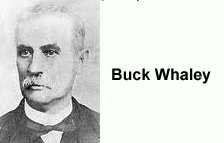
20. Buck Whaley was an extremely wealthy gambler who lived in Dublin in the seventeen hundreds. Due to inheritances, he had an income of seven thousand pounds per year (not far off seven million a year at today's prices). He lived in a huge house near Stephen's Green which is now the Catholic University of Ireland. He went broke and he had to leave Ireland due to gambling debts. He swore he'd be buried in Irish soil but is in fact buried in the Isle of Man in a shipload of Irish soil which he imported for the purpose. 21. The converted Ford Transit used for the Pope's visit in 1976 was upholstered using the most expensive carpet ever made in Dublin. The carpet was a silk and Teflon weave and rumoured to have cost over IR£950.00 per square meter. 22. There was once a large statue of Queen Victoria in the Garden outside Leinster House. It was taken away when the Republic of Ireland became independent and in 1988 was given as a present to the city of Sydney, Australia to mark that city's 200th anniversary. 23. The largest cake ever baked in Dublin weighed a whopping 190 lb's and was made to celebrate the 1988 city millennium. The cake stood untouched in the Mansion House until 1991 when it was thrown out. 24. Strangers are more likely to receive a drink from Dubliners than from a native of any other County. 25. There are forty six rivers in Dublin city. The river flowing through Rathmines is called the River Swan (beside the Swan Centre). The Poddle was once known as the 'Tiber' and was also known as the River Salach (dirty river), which is the origin of the children's song 'Down by the river Saile'. It is also the river whose peaty, mountain water causes the Black Pool mentioned above. 26. Saint Valentine was martyred in Rome on February 28th eighteen centuries ago. He was the Bishop of Terni. His remains are in a Cask in White Friar Street Church, Dublin. He is no longer recognised as a Saint By the Vatican. 
27. The statue originally in Dublin's O'Connell Street (but now moved to the Phoenix Park) is commonly known as the 'Floozy in the Jacuzzi' while the one at the bottom of Grafton Street is best known as the 'Tart with the Cart'. The women at the Ha'Penny bridge are the 'Hags with the bags' and the Chimney Stack with the new lift in Smithfield Village's now called the 'Flue with the View'. The short lived millennium clock that was placed in the River Liffey in 1999 was known as 'the chime in the slime'. 28. Montgomery Street was once the biggest red-light district in Europe with an estimated 1600 prostitutes. It was known locally as the 'Monto' and this is the origin of the song 'Take me up to Monto'. 29. Henry Moore, Earl of Drogheda lived in Dublin in the Eighteenth century. His job was naming streets. He called several after himself. Henry Street, Moore Street, Earl Street, Drogheda Street. Drogheda Street later became Sackville Street and is now O'Connell Street. 30. Nelson's Pillar was blown up in 1966 to mark the fiftieth anniversary of the 1916 rising. It now lies in a heap in a valley in County Wicklow. 31. Leinster House in Dublin was originally built as a private home for the Duke of Leinster. At that time, the most fashionable part of Dublin was the North Side and he was asked why he was building on the South Side. He said 'Where I go, fashion follows me!' .....and to this day the most fashionable part of Dublin is the South Side. 32. Tallaght is one of the oldest placenames in Ireland and it means 'The Plague cemetery'. 33. There are seven areas in Dublin whose names end in the letter 'O'. Fewer than one Dubliner in 20,000 can name them off by heart. They are: Rialto, Marino, Portobello, Phibsboro, Monto, Casino and Pimlico. 34. Kevin Street Garda Station was once the Palace of the Archbishop Of Dublin. 35. The original name of Trinity College was 'Trinity College Near Dublin'. The capital was a lot smaller then. Best wishes from Van Demons Land! David Carey. (In Australia but from Limerick!) |
KEEP THIS NEWSLETTER ALIVE! Visit https://www.irishnation.com
|
=============================== THE EASTER RISING IN IRELAND, 1916 =============================== 1. BACKGROUND TO THE RISING THE IRISH REPUBLICAN BROTHERHOOD (IRB) One of the main and lasting effects of the Great Famine of 1845-47 was emigration. The 'Coffin Ships' carried tens of thousands of the poorest Irish people who fled Ireland to avoid starvation. They created a new Irish nation within America whilst remembering the injustice of the English occupation of their homeland as well as harboring a deeply felt hatred of landlords and evictions. A Clann na Gael source estimated that there were over one and one half million people of Irish birth in America towards the end of the nineteenth century. These people supported the republican cause by giving money, weapons and, significantly, a propaganda machine which has continued to this day. The Irish Republican Brotherhood was formed in a Dublin timber-yard on Saint Patrick's Day in 1858. James Stephans was assisted by Thomas Clarke Luby, James Denieefe, Garret O'Shaugheynessy and Peter Langan. Joe Denieefe brought financial support back from America. He had left Ireland after the Ballingarry defeat in 1848. James Stephens, Michael Doheny and John O'Mahony fought in Ballingarry in 1848. Stephens was injured but still manage to escape to Paris where he familiarized himself with the revolutionary tactics of that country. He came back to Ireland to try to establish an underground organisation to remove the English from Ireland. 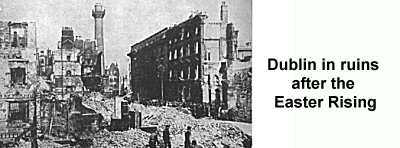
Denieefe and Luby traveled the country extensively and organised military groups called 'circles'. They formed oathbound secret societies of loyal patriots. Popular opinion did not support the revolutionary ideals of the IRB nor did the Church whop were strongly opposed. The mainstream support came from the poorer classes who, despite their poverty, were often highly idealistic. At the time of the 1867 rising the membership of the IRB was estimated at over 80,000. INFORMERS Informers such as Corydon and Magle did untold damage to the IRB by betraying their oath and giving information to the English. The Fenian movement split in America in 1865. John O'Mahony took over from the Stephans. O'Mahony was later himself to be deposed when his hesitation in calling an insurrection dissatisfied the soldiers he commanded (many of whom were veterans of the American Civil War). Colonel Thomas J. Kelly, was appointed Chief of Staff of the IRB in 1867 and departed for Ireland. A rising was planned for February 1867. Chester Castle in England was to be attacked and simultaneous raids in Ireland were to be carried out. The English knew in advance however as Corydon kept them informed. The news had not filtered through to the Fenians in Ireland and sporadic battles took place in Kerry and Dublin. THE MANCHESTER MARTYRS The IRB was reorganised in Manchester in July of 1867 and a supreme council elected. Colonel Kelly and Jim Deasy were captured by the English and then rescued by the Fenians in a daring raid in which a police officer was killed. Allen, Larkin and O'Brien were hanged for their complicity in the events and they became known as 'The Manchester Martyrs'. The mass funerals that followed together with the later formation of the Land League focused the minds of the popular masses on the injustice of English rule in Ireland. CLAN NA GAEL The IRB delegates in Manchester broke away from the feuding factions of Fenianism in America and supported Clan na Gael who were founded there in June of 1867. The objectives of Clann na Gael was to secure an independent Ireland and to assist the IRB in achieving this aim. John Devoy was the mainstay behind the Clan. Devoy became involved in the 'New Departure' and assisted Davitt and Parnell in their fight against the landlords. Independence remained his main aim however as he felt that the Land League was not militant enough to remove the landlords. Devoy, assisted by Doctor Pat McCartan, founded a newspaper, 'The Gaelic American’'. Doctor Pat McCartan transferred from Clan na Gael to the newly formed 'Dungannon Clubs', a separatist organisation which was denounced by the Church. Tom Clarke became a member of the Supreme Council of the IRB in 1909 and helped form the revolutionary paper 'Irish Freedom'. He became the link with Clan na Gael in America. In 1912 the IRB sent Sean MacDiarmada as a delegate to the Clan convention and he succeeded in securing the enormous sum of $20,000 for the IRB at home. IRISH VOLUNTEERS In November 1913 the Irish Volunteers were formed in Dublin and 4,000 enrolled on that first night. In 1914 Padraig Pearse went to America to raise funds to save his Gaelic school, St. Enda's. This he achieved and then turned his attention to revolutionary matters. On his return from America he sought 1,000 rifles from McGarrity. He as assisted by Sean Mac Diarmada, Eamonn Ceannt and Sean Fitzgibbon. Pearse was convinced that the revolutionary force in Ireland had never been better organised or equipped. His speech in 1914 reflected this:- 'In Dublin, we have some 2,500 admirably disciplined, drilled, intelligent, and partly armed men. Nationalist Ireland has never before had such an asset. Our main strength is in Dublin, but large minorities support us everywhere, especially in the towns and in the extreme South and West. We expect to have 150 companies, representing 10,000 to 15,000 men, represented by delegates at next Sunday's Convention.' THE GAELIC LEAGUE AND THE GAA The IRB were influential in many cultural and national organisations. Most of the leaders like Pearse, Plunket and McDonagh were fluent Irish speakers and were members of the Gaelic League. The Gaelic Athletic Association (the GAA) was formed by Cusack in November 1884. THE GREAT WAR 1914-18 At the outbreak of the first world war, Redmond urged the Irish Volunteers to join in the fight against the oppressors of small nations. 170,000 of the Volunteers supported Redmond whilst 11,000 supported Pearse. Tom Clarke urged the Supreme Council of the IRB that a rising must happen before the end of the war, especially as the Irish Home Rule bill had been suspended at the outbreak of the war. Pearse, Plunket and Ceannt drafted the first military plans. ROGER CASEMENT Prior to the rising and thanks to Hobson, Casement and Childers, guns were landed at Howth and Wicklow. Casement went to Germany where he published the Irish cause in German newspapers. His efforts to secure weapons were dealt a severe blow when he and the weapons they were attempting to smuggle into the country were captured on Banna Strand. Casement, an English subject, was eventually convicted of treason and hanged. PLANS FOR THE RISING Thomas Clarke was the main instigator of the rising, supported by Pearse, Sean Mac Diarmada, Eamonn Ceant and Sean T. O'Ceallaigh who went to America for further assistance. Thomas McDonagh, Joseph Plunket and James Connolly. were later brought on to the Supreme Council. James Connolly used his paper 'The Workers' Republic' to call for an armed revolt. He used the Citizens Army to protect the paper. The Irish Volunteers were holding recruiting meetings throughout Ireland and training enthusiastically. They awaited the signal to act as the rising had been set for Easter Saturday, 22nd of April, 1916. Setbacks to the plan included the capture of Casement and the weapons, the capture of Austin Stack, commandant of the Kerry Brigade and the discovery of the plans for an uprising following a raid on German officials in New York. The Supreme Council decided unanimously decided to proceed with the uprising despite the fact that they knew it had little chance of success. It was decided to strike on Easter Monday. In spite of the order from McNeill not to revolt, over 2,000 soldiers made a strike for freedom. 2. THE INSURRECTION On Easter Monday, 24th April, 1916 the GPO was occupied by the revolutionary forces. Pearse read the Proclamation of the Republic to a bemused gathering. 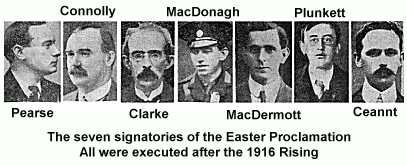
The Volunteers seized and fortified six positions in Dublin city: the GPO, the Four Courts, Boland's Mill, St. Stephen's Green, Jacobs Factory and the South Dublin Union. Attempts to seize Dublin Castle and Trinity College failed. This latter failure severely restricted the Volunteers mans of communicating with each other. The failure of the country to rise made it impossible to prevent the arrival of English reinforcements. By Wednesday the revolutionaries were outnumbered by 20 to 1. The English secured a cordon about the city and closed in. They concentrated their attack on the GPO whilst none of the other strongholds came under the same sort of concentrated bombardment. A gun-ship, the Helga, arrived in Dublin and field-guns were mounted on Trinity College. The effect of the continuous shelling of O'Connell Street virtually destroyed it and the surrounding areas. By Friday the GPO was engulfed in flames and Pearse gave the order to surrender. 450 people were dead, many of whom were civilians, with over 2500 wounded. The city was in ruins with the damage estimated at a massive 2 Million pounds. Over 3,500 people were subsequently arrested country-wide (including DeValera and Collins), although 1,500 were freed after questioning. 1,841 of these were interned without trial in England, and 171 were tried by secret court martial resulting in 170 convictions. 90 were sentenced to death but 75 of these sentences were commuted to life imprisonment. The seven signatories of the proclamation of independence (Pearse, Connolly, Clarke, MacDonagh, MacDermott, Plunkett, and Ceannt) were all executed to the outrage of the Irish public who had now begun to revise their opinion of the insurgents to that of a heroic nature. 3. EFFECTS OF THE REBELLION The rising was critical in terms of the overall fight for an Irish Republic. For the first time the masses of the country wanted an end to English rule. Nationalism swept the country especially as the details of the secret executions became known. National attention was brought to the Irish cause and to the oppressive ways in which the English ruled the country. These realisations were in all probability the main aim of the insurgents. The War of Independence which followed in 1919, the subsequent Civil War and the formation of the Irish Free State and the declaration by Costello of an Irish Republic can all be traced back to the events of Easter week, 1916. |
==============================
YOUTUBE VIDEOS OF IRISH INTEREST
==============================
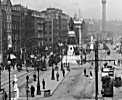
Real footage of the Easter 1916 Rising
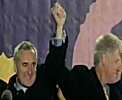
RTE News coverage of the Mahon Report and Bertie Ahern
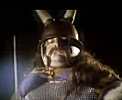
History of the Ancient Celts
===========================
GAELIC PHRASES OF THE MONTH
===========================
PHRASE: Cad ba mhaith leat?
PRONOUNCED: cod buh watt lat
MEANING: What would you like?
PHRASE: Ba mhaith liom tae/bainne/uisce beatha/beoir
PRONOUNCED: buh watt lum tay/bonn-ye/ishka ba-ha/bee-yore
MEANING: I would like tea/milk/whiskey/beer
PHRASE: Ni maith liom /bricfeasta/lon/suipear
PRONOUNCED: knee mawt lum brick/fasta/loan/sue-pear
MEANING: I would not like breakfast/lunch/supper
View the archive of phrases here:
https://www.ireland-information.com/irishphrases.htm
==================
COMPETITION RESULT
==================
The winner was: Jimmy@Clarkedecorate.com
who will receive the following:
A Single Family Crest Print (decorative)
(US$19.99 value)

Send us an email to claim your print, and well done!
Remember that all subscribers to this
newsletter are automatically entered into the
competition every time.
I hope that you have enjoyed this issue.
Until next month,

Michael Green,
Editor,
The Information about Ireland Site.
https://www.ireland-information.com
Click here to contact us